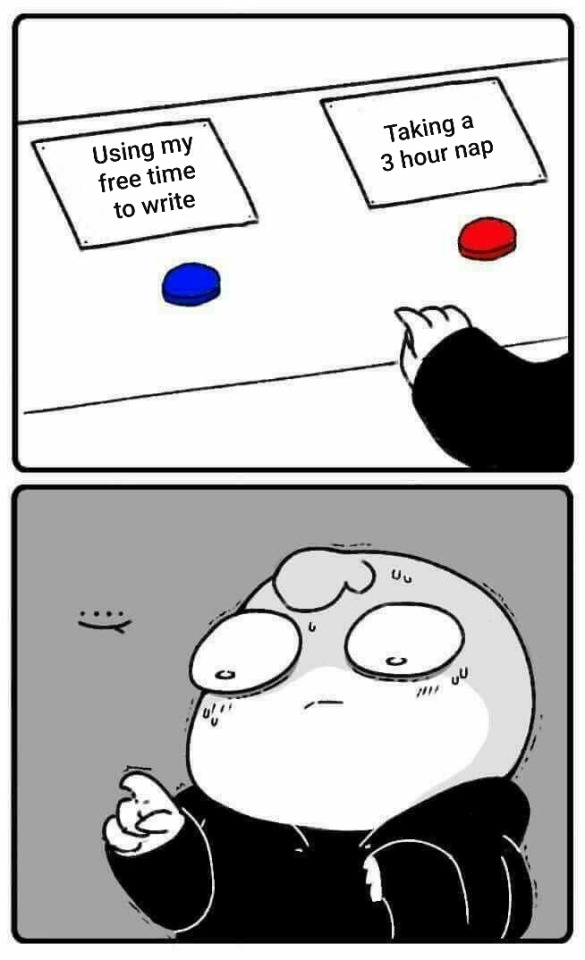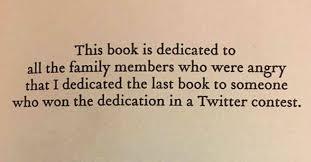This is a sideblog for me to follow my language learning process currently dedicated to Japanese and German. Feel free to chat to me anytime whether it be to correct something in the language i'm learning or to ask me anything!
Don't wanna be here? Send us removal request.
Text
OP I hate to break it to you but i use those endearments on the regular with people im speaking with the first time. I also receive those same endearments regularly from people I dont know. Endearments like darling, honey, sweetie, sweetheart, love, and even babe are all pre common as a form of adress with people you don't know and will never see again.
Gays be like “this cute person can’t POSSIBLY be flirting with me haha what an insane thought” and the person they’re talking to is literally calling them honey or sweetie
#shellsanrants#i work in fast food and i get those words on the reg#i wish this checkes out foe the sake of my own inability to tell if someone likes me#but alas this is a bust#shellsanspeaks
16K notes
·
View notes
Text
So, if you put your URL in here, you can listen to all the music you’ve ever blogged.

944K notes
·
View notes
Photo

“Writers - if you’re stuck on a scene and don’t know how get it done right, don’t be afraid to use filler[.] […] Just. Keep. Writing. You’ll figure it out. Sometimes all it takes is writing a later scene to crack it.“ (C. Robert Cargill)
21K notes
·
View notes
Text
So, tonight was my first time picking up my German studies properly in almost a year, and the first thing I’m going to express is that you should pick a time. The advantage of of self-learning, is that you can make your own hours. BUT. If you let yourself get away with that too much, you’ll never get anywhere. What’s helped me (with my Japanese until now, and hopefully with my German) is setting a time. Find a time that you know you will be able to stick with every week, however often you choose, and make it a habit to work on your language then.
For me, this is now on a Monday from 7-9. After a few weeks, my brain is going to get used to switching to German at 7-9 every Monday, and it’ll become even easier to sit down and learn.
Onto my current learning methods:
1. I still use memrise. If you aren’t sure what that is, it’s very similar to duolingo, however I prefer they style it uses more, and I feel like I learn more this way. Mostly these form a good ‘base’ for my learning, and provide some good basic vocab.
2. I’m trying a new method, which is to learn using childrens books (which I pinched off of my friends mother). Below I have an example of one.



Basically, using this book, I first read the German out loud to myself. Then in blue, I write out the line in German. Then, I type in the words (NOT the sentence) to get a translation of any of the words I don’t know/can’t remember. Then I guess at how the sentence reads, before translating the full thing to see if I was correct/what I got wrong. Then I fill in the English underneath the German in black.
(Below is an image of how my book ended up looking):

After this, I list out all of the vocabulary from the pages in German (don’t do the English at the same time!), particularly the ones that I don’t know, but if I have extra room I add the ones I know for learning’s sake. Once the German is finished, I write out the English translations that I can remember first, then before I check for the other ones I highlight over the blank spaces. This is so that I can note all the words that I didn’t remember, even if I do actually know them, so that I can focus on those when I review my vocab list later. Only then, do I fill in the blank spaces with the correct English.
(Below is an image of how my book looked):

After that, I used snapchat to record myself reading those pages with the words there, and sent them off to my friend (who’s mother tongue is German) so that she can correct my pronunciation of some of the words.
And that’s all I do currently~
#german#german learning#Language Learning tips#language learning#mine#current studying methods#beginner german learning#these are just my current tips but if you have any ideas on what also might work let me know!
14 notes
·
View notes
Text
Hello!
It’s been a long time since I’ve actively used this sideblog, but since I’m starting to self-study once more and create habits, I’m going to give this another go for typing up my current tips/studying methods for learning another language, and also as another way to cement my own learning.
Since I was last active, I’ve done my German from time to time, mainly using Memrise and study cards. However, I’ve started studying it more often now, and I’ll be posting my current tips/study methods just after this.
On the other hand, my Japanese has been much more frequent since I started an actual night class in March this year. On Wednesdays from 7-9 most weeks I study Japanese in a classroom of people who want to learn as well which is great for productivity and my mindset. When I have some time, I’m going to throw together some posts on how my teacher (who is Japanese) has taught the subject, perfect for beginners since I opted to go back and cement my basics, rather than jumping forwards and trying to work from shaky foundations.
#personal#life update#im excited to get this blog running again tho#please be patient with me as I get the hang of things tho!
0 notes
Text
German Study Session: 1

I decided early on that I would use chromatic blue as my designated book colour for German. This means that when I am studying Japanese I will always be using a light pink notebook. Additionally, I have decided to use both blue and black pens because as mentioned in my getting started post, this helps to maintain a habit.

It has taken me a while to decide to set aside the time and focus on writing out my German notes like I have with Japanese however now that i have i’m very glad that I did. It’s easier for me to remember things that i’d read and was beginning to forget by writing them out. The information here comes from the duolingo app and it holds a great amount of insight without being too overwhelming for one sitting. This is extremely useful. The fact that it comes from an native English speaking perspective means that there are also things that are mentioned that someone who has a different mother tongue or has never learnt another language would never have considered as something worth mentioning that I found myself questioning initially.
This is really a great resource and I plan to use it quite a lot in the beginning to help me really get started.
XX Shellsan
0 notes
Text
Japanese Study Session: 1

I decided early on that I would use light pink as my designated book colour for Japanese. This means that when I am studying Japanese I will always be using a light pink notebook. Additionally, I have decided to use only black pens because as mentioned in my getting started post, this helps to maintain a habit.

My first study session in which I’ve sat down and actively tried to learn outside of my normal resources comes from one of those same resources. I’ve found that by writing out what I need to learn when I first begin, I can remember and then later repeat with less difficulty the things that I have learnt. That’s why i’ve decided to write out each of my WaniKani lessons as they come along. So far this has been a helpful addition that I plan to continue in future.
XX Shellsan
0 notes
Text
Getting Started: German
So here I just thought I’d post how I’ve gone about starting up my German studies in case anyone else was wondering about how to get started.
Unlike Japanese where I have a precedent for what I know and what i’m good at and where I lack, learning German is more than a little bit of a jump. The decision to start German stems from one of my best friends and her family that i’m very close with who speaks German in her household because of her heritage. This means that I’m going into a language completely the opposite of all other languages i’ve had to learn and at first I wasn’t sure what to do.
In the end, I decided to start out just using the duolingo app on my phone into order to get started into practicing and in the end I do think that this was a great decision on my own part.
While duolingo seems extremely simple and may make it seem like you aren’t learning, what is useful to pay attention to is the option to read up on the lessons that go with every bubble you complete. I find that the information in these bubbles is a good place to start understanding what exactly is going on and it helps me to understand the things that were confusing me in a layout that I find familiar and that works well for me.
This brings me to Step One: Identifying goals, strengths and weaknesses. I think one of the most important things to remember when learning a language is that you are learning, and it is always best to recognise that there are some things that you will struggle with and others that you will find extremely easy. For me I know that my strength comes from my ability to recognise and memorise words, phrases and images quickly. I also know, however, that my greatest weakness is using this skill to overwhelm my own mind and ending up with too much to learn at once and never allowing myself to fully process what I have learnt by continuously testing myself after learning. By recognising this, I can make it a goal to limit how much I learn in one hit while also practicing what i have learnt previously often enough that I will remember it later.
Additionally, I know that my eventual purposes with German is to have a conversational fluency which means I can make it a goal to speak and write to my friend in German in order to practice this skill and further increase my understanding of the language at a faster pace.
This brings me to Step Two: Allocating Time. It is important to allocate your study time in regards to how much you want to learn, at what pace and most importantly at a rate that you can keep up with indefinitely. Having a set schedule for your studies will help to keep you on track as well as allow your brain to get into a rhythm where eventually it will be normal for you to study at a certain time and before you know it, you’re already in the mood without having to hype yourself up.
Finally there is Step Three: Allocating Supplies. This is more of a tip I found but I think it’s important enough to be a step and that is allocating separate supplies to everything you’re studying. It also pays to colour code what you use so that you don’t mix up languages (or any other topics you may be studying). This words similarly to step two in that it allows your brain to know when you pull certain supplies out, you are settling down to work and it will pray off in the end.
Obviously I’m no teacher specialist but I thought that I would share the first steps I was taking and see if it helps anyone. I also find that by writing out the first steps i’ve taken to really focusing on my language studies, it helps me to remember why I’ve done the things that I’ve done and helps me focus on continuing that pattern in my other studies.
XX Shellsan
1 note
·
View note
Text
Getting Started: Japanese
Hey so this is my first post on this side blog and I thought that I would just mention the steps that I’m going through to get started on my Japanese language journey in the hopes that it could help someone else if they want to learn a language but are feeling overwhelmed with the many options that are available to start of with.
It is important to note that in the case of Japanese, I have taken classes in the my eighth, ninth, eleventh and twelfth grades before finishing school and I have previously spent over a month in Japan from the beginning of January until halfway through February so Japanese is not at all a new subject to me. Much of what I’m doing now is trying to expand upon the limited knowledge that a traditional classroom method of language learning here is Australia dictates and fill in the various places in my Japanese that I know are lacking.
This brings me to Step One: Identifying goals, strengths and weaknesses. I think one of the most important things to remember when learning a language is that you are learning, and it is always best to recognise that there are some things that you will struggle with and others that you will find extremely easy. For me I know that my strength comes from my ability to recognise and memorise words, phrases and images quickly. I also know, however, that my greatest weakness is using this skill to overwhelm my own mind and ending up with too much to learn at once and never allowing myself to fully process what I have learnt by continuously testing myself after learning. By recognising this, I can make it a goal to limit how much I learn in one hit while also practicing what i have learnt previously often enough that I will remember it later.
My second goal stems from my next two weakness. My kanji level is incredibly low due to the way that I was taught kanji in school. There are various kanji that I recognise parts of however I was never taught what the kanji’s or radicals themselves mean. This means that it’s almost impossible to apply my kanji and reading knowledge to a real life situation because it is specialised to those i needed to learn in class.
To change this, I currently am using a website called WaniKani that breaks down the different kanji into the radicals that makes up each kanji before teaching the basic kanji and what they mean in Japanese. This will allow me to expand my kanji without having to choose them all myself which takes away a lot of the uncertainty and most importantly, the website its self limits how often i can use it. This means that I can’t rush my own learning.
This brings me however, to my third weakness. Vocabulary. This is probably fairly common but because my previous knowledge stems from classroom based plans, the vocab is also directly related to that. This means that in many real life speaking situations, the Japanese that I do know does not apply which defeats the purpose of knowing another language. In order to correct this, some of my information comes from WaniKani (who obviously teach the meanings behind the words that i’m learning as well as some extra vocab) and from another app called duolingo which I use to make sure that I’m always studying at least something everyday because it uses a streak system and I find it very useful.
This brings me to Step Two: Allocating Time. It is important to allocate your study time in regards to how much you want to learn, at what pace and most importantly at a rate that you can keep up with indefinitely. Having a set schedule for your studies will help to keep you on track as well as allow your brain to get into a rhythm where eventually it will be normal for you to study at a certain time and before you know it, you’re already in the mood without having to hype yourself up.
Finally there is Step Three: Allocating Supplies. This is more of a tip I found but I think it’s important enough to be a step and that is allocating separate supplies to everything you’re studying. It also pays to colour code what you use so that you don’t mix up languages (or any other topics you may be studying). This words similarly to step two in that it allows your brain to know when you pull certain supplies out, you are settling down to work and it will pray off in the end.
Obviously I’m no teacher specialist but I thought that I would share the first steps I was taking and see if it helps anyone. I also find that by writing out the first steps i’ve taken to really focusing on my language studies, it helps me to remember why I’ve done the things that I’ve done and helps me focus on continuing that pattern in my other studies.
XX Shellsan
#language#language learning#tips#advice#language learning tips#study tips#getting started#starting out#long post#japanese#learning
6 notes
·
View notes












